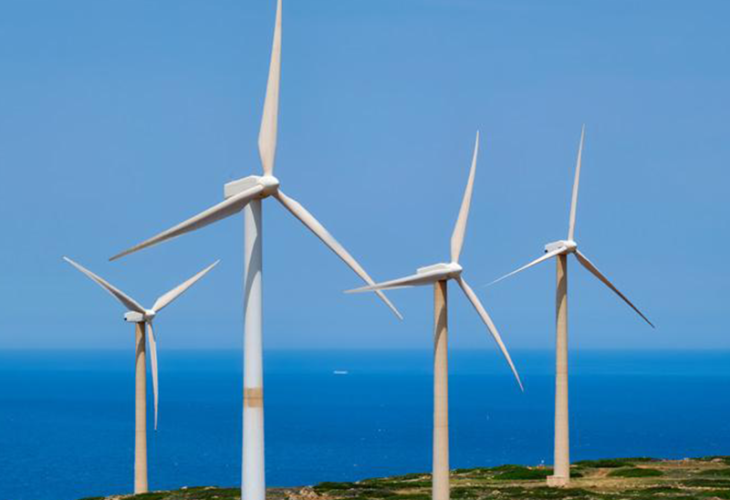Are we Ready to Phase out Fossil Fuel?
- Home
- Are we Ready to Phase out Fossil Fuel?

03May’24
Dr. Yen Adams Sokama-Neuyam
Head, Department of Petroleum Engineering,
KNUST
Net-Zero Consultant and Principal Research Lead,
Net-Zero Carbon Emission Lab (NCEL), KNUST
Introduction
Climate change, which is now a global challenge, is considered the greatest threat to human health and security. The Paris Climate Agreement aims to limit global warming to about 1.5 , compared to pre-industrial levels. To achieve this target, global greenhouse gas (GHG) emissions must be reduced by at least 45% by 2030 with a collective commitment to
achieve net-zero emissions by 2050. According to the International Energy Agency (IEA), the oil and gas industry alone accounts for about 55% of global anthropogenic GHG emissions. The operations of the industry account for about 15% of global GHG emissions while the combustion of fossil fuels produced by the industry is responsible for an additional 40% of global emissions. However, apart from consistently providing about 80% of global energy for the past four decades, by far, fossil fuels have provided the most affordable, accessible, and reliable energy for industrialization and economic growth. Now, the most difficult challenge faced by the world in the pursuit of its net-zero targets and the fight against climate change is the critical decision to transition with or without fossil fuels. This single decision holds the key to effective climate action because it determines the decarbonisation technologies to develop, the projects to fund, the infrastructural needs and policy frameworks. In this article, I strive to analyse this critical decision from a strictly technical perspective.
The Real Reasons Why We Need Fossil Fuels
In 1985, the share of fossil fuels in the global energy mix was about 88.6%. This share reduced marginally to about 86.7% in 2000 and further reduced slightly to about 82% in 2023. Thus, in about 38 years, the world has succeeded in replacing only about 6.6% of fossil fuels in the global energy mix. In other words, consistently, fossil fuels have contributed at least 80% of the global energy supply for the past four decades. Globally, transportation also continues to rely heavily on oil products for nearly 91% of its final energy, down only about 3.5% since 1970. The industrial sector’s energy mix has also remained relatively unchanged, with the share of fossil fuel decreasing from about 74% in 2010 to around 65% in 2022. Thus, the three main sectors that drive the global economy – energy, transportation, and industrialisation are all driven predominantly by fossil fuels. Additionally, most over-the-counter medications, homoeopathic products and vitamins, makeup, shampoo, almost all plastics, synthetic rubbers such as shoes and tyres, most cleaning products and asphalt on the 11 million miles of paved roads in the world are all products of petroleum. It is almost impossible to imagine a world without fossil fuels. To replace the share of fossil fuels in the global energy mix, transportation and manufacturing, the world will need to scale up wind energy by about 15 times (1 TW to 15TW), solar energy by about 25 times (1.2 TW to 26TW), power grid by 3 times (70 mil Km to 200 mil Km), green hydrogen by about 500 times (1 MT to 500 MT), electric vehicles and batteries by almost 60 times (2 M EV fleet to 1500 M) and carbon capture by at least 100 times (0.05 GtCO2 p.a to 10 GtCO2 p.a). To achieve this feat, the world will need to increase the production of rare earth metals significantly – graphite anodes by about 45%, cobalt by about 40%, lithium by at least 30%, neodymium by about 30%, nickel by about 15% and copper by at least 10%. Financially this will cost the world a minimum of about USD 110 trillion. Moreover, most of the technologies required for this transition are still in their early stages of development, requiring not less than a decade of consistent research and development to reach full maturity. These hurdles explain why experts use the term “energy transition” rather than “energy change”. These are conservative estimates of the materials, time and resources required to phase out fossil fuels.
The Real Reasons Why Some Hate Fossil Fuels To appreciate the real impact of fossil fuels on climate change, we must start by looking at the “Remaining Carbon Budget”. The Remaining Carbon Budget (RCB) is the net amount of carbon dioxide (CO2) that humans can still emit while keeping global warming below a given limit (say about 1.5 •C, compared to pre-industrial levels) with a given probability. The RCB is the main basis for the call to phase out fossil fuels now. The literature shows that currently there is no scientifically accurate model for estimating the RCB. For example, estimated data based on 3 different models from about 12 researchers considered by CarbonBrief, ranges between -192 to about 779 GtCO2. However, the most recent estimate of the RCB, published in Nature Climate Change1 which is consistent with assessments published by about 50 leading climate scientists for a 50% chance of keeping warming to 1.5 °C is about 250 GtCO2 as of January 2023. Thus, if humanity wants to have a 50-50 chance of limiting global warming to 1.5°C, we can only emit another 250 billion metric tonnes of CO2. According to the IEA, the production, transport and processing of oil and gas alone emitted the equivalent of about 5.1 billion tonnes of CO2 in 2022. If this emission path is consistent, it will take the operations of the oil and gas industry alone just about 49 years to exhaust the predicted RCB. Emissions from the combustion and uMlisaMon of fossil fuels have not been considered. What about carbon capture and storage (CCS)? According to the Global CCS Institute, if all the current global CCS facilities are operational, they can capture and store just about 243.9 million tonnes of CO2 annually, which is only about 4.8% of annual CO2 emissions from oil and gas operations alone. What about afforestation and reforestation? Currently, all the plants and trees in the whole world sequester just around 2.4 billion tonnes of CO2 annually, which is about 47% of CO2 emissions from oil and gas operations alone. Mitigation of emissions from oil and gas operations alone will require doubling the total number of trees in the world. Currently, the world does not have a plausible solution to global fossil fuel-related emissions. It is simply difficult to imagine the world attaining its net-zero targets with fossil fuels in the picture. This is the main reason for the increasing hostility towards fossil fuels.
Conclusion
Are we ready to phase out fossil fuels? I wish I had a straightforward answer. On one hand, we need to phase out fossil fuels to stand a chance of achieving the global net-zero targets. On the other hand, we cannot afford to phase out fossil fuels until we have found reliable replacement options. This is one of the greatest challenges of our lifetime.
1 Lamboll, R.D., Nicholls, Z.R.J., Smith, C.J. et al. Assessing the size and uncertainty of remaining carbon budgets. Nat. Clim. Chang. 13, 1360–1367 (2023).
https://doi.org/10.1038/s41558-023-01848-5


Leave Your Comment
You must be <a href="https://ghie.org.gh/wp-login.php?redirect_to=https%3A%2F%2Fghie.org.gh%2F2024%2F05%2F03%2Fare-we-ready-to-phase-out-fossil-fuel%2F">logged in</a> to post a comment.